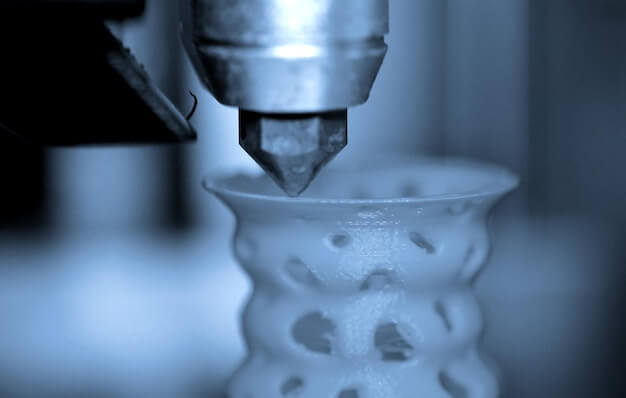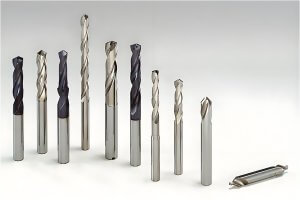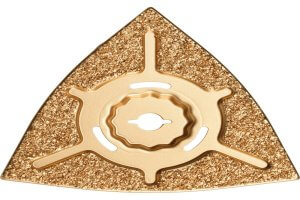Introduction to 3D Printing
3D printing stands as a transformative approach to manufacturing, allowing for the creation of complex shapes and structures through an additive process where material is laid down layer by layer to build up the final product. This intricate method begins with a digital model, often designed in computer-aided design (CAD) software, which is then sliced into thin horizontal layers by specialized software. The printer follows these blueprints, precisely depositing materials like plastics, metals, or even concrete, typically using techniques such as fused deposition modeling (FDM), selective laser sintering (SLS), or stereolithography (SLA). From prototyping to producing finished goods, 3D printing opens up innovative possibilities across diverse sectors including medicine, aerospace, and automotive industries.
The 3D Printing Process
The journey of a 3D printed object begins with designing a model using Computer-Aided Design (CAD) software, where precision and detail encapsulate the envisioned product. This digital model is then translated into a printable file format, typically STL or OBJ, which slices the design into layers that the printer can interpret and build upon. Preparation for printing requires setting up the machine and materials; this includes loading the filament or resin and calibrating the print bed on an FDM or SLA printer, respectively. Layer-by-layer construction is fundamental to 3D printing, depositing material in thin sections until the model takes form in three dimensions. Following this phase, post-processing steps are essential to achieve the desired finish—this could involve support removal, sanding, and sometimes curing, which enhances the physical properties and aesthetics of the final product.
Advantages of 3D Printing
The realm of 3D printing offers remarkable advantages shaping the future of manufacturing and creativity. One such advantage is the exceptional capability for customization, allowing for intricate and personalized designs that meet specific customer needs without additional cost. This tailoring prowess significantly reduces waste in manufacturing, as 3D printers precisely layer materials to form objects, minimizing excess scraps compared to traditional subtractive methods. Furthermore, time efficiency is drastically optimized; digital files can swiftly be turned into physical products, streamlining the production timeline from weeks to mere hours in some scenarios. Lastly, 3D printing technology has become increasingly accessible for small-scale creators and entrepreneurs, democratizing the tools necessary to innovate and bring unique ideas to market with reduced capital investment and material resources.
Applications of 3D Printing
The utility of 3D printing spans several industries due to its capacity for complexity and precision. In the aerospace sector, it’s leveraged to produce lightweight components that can withstand high stress, aiding in efficiency improvements and cost reductions. The automotive industry employs this technology for prototyping new designs swiftly and manufacturing end-use parts. Medical applications showcase a remarkable benefit as well—custom prosthetics and implants are tailor-made for patients, optimizing fit and functionality. Consumer products see an infusion of personalization with 3D-printed jewelry and furniture offering unique designs away from mass production’s uniformity. Architectural models produced through 3D printing serve as accurate representations for projects, facilitating client visualization and construction planning. A notable example is the 3D-printed bridge in Amsterdam by MX3D, demonstrating the viable integration of this technology into large-scale construction processes, while pushing boundaries on what can be achieved architecturally and structurally through additive manufacturing.
Potential Advancements in 3D Printing Technology
The future of 3D printing hinges on continuous technological evolution, with prospects such as enhanced speed and resolution that may revolutionize manufacturing. Breakthroughs in printer design are anticipated to bring forth printers capable of working at the molecular level, enabling the creation of more complex and precise products. Another promising avenue is the potential integration of AI, which could streamline the design process by suggesting optimizations and automatically adjusting print parameters for improved results. Advances in multi-material printing might allow for the seamless combination of different materials within a single print cycle, expanding the versatility and functional scope of printed items. These technical principles point towards a transformative leap in how goods are crafted and tailored, propelling 3D printing into new industrial realms.
Most Commonly Used Material in 3D Printing
The most widely utilized material in 3D printing is polylactic acid (PLA), a biodegradable thermoplastic derived from renewable resources like corn starch or sugarcane. PLA’s popularity stems from its easy printability, low melting point, and minimal warp characteristics, making it an excellent choice for beginners and seasoned pros alike. Other prominent 3D printing materials include Acrylonitrile Butadiene Styrene (ABS), known for its strength and heat resistance; Thermoplastic Polyurethane (TPU), valued for its flexibility; and various photopolymers used in resin-based 3D printers that solidify under UV light to produce smooth, detailed objects. Each material brings distinct properties and applications to the table, shaping the landscape of what can be achieved with 3D printing technology.
Scalability Challenges and Solutions in 3D Printing
When it comes to producing large structures through 3D printing, scalability is a significant factor that often brings unique challenges. Due to limitations in the size of printer beds, most conventional 3D printers are confined to creating small to moderately sized objects. However, innovative solutions have emerged to address this constraint. For instance, modular construction techniques enable larger components to be printed individually and then assembled into grand architectures. Additionally, advancements in “construction 3D printing” allow for on-site fabrication of building elements using concrete and other materials, bypassing the size restrictions of traditional printers. While scaling up introduces issues such as maintaining structural integrity and the logistics of managing large-scale print jobs, these technological evolutions are paving the way for 3D printed houses, bridges, and even entire buildings.
Impact of 3D Printing on Traditional Manufacturing Jobs
The advent of 3D printing technology has precipitated significant transformations in the job market, particularly within traditional manufacturing sectors. As 3D printers become more prevalent, the need for manual labor in processes such as prototyping and assembly is reduced. For example, a single 3D printer can automate the production of complex parts that would have otherwise required multiple workers to produce using conventional methods. However, this shift also fosters new opportunities for jobs that specialize in 3D design, printer operation, and post-processing of printed objects. While some roles may diminish in demand, others focused on the oversight and maintenance of these sophisticated machines are emerging.
Multi-material 3D Printing Capabilities and Constraints
In the realm of additive manufacturing, multi-material 3D printing stands as a significant advancement, allowing the simultaneous use of different materials within a single print job. This functionality enables the creation of more complex and functional parts with varying properties such as color, mechanical strength, or flexibility in designated areas of the object. For instance, a single print could incorporate both rigid structures and soft hinges or gaskets. However, this capability does not come without challenges. Printers capable of handling multiple materials often necessitate sophisticated extrusion systems and nozzles that can switch between materials or merge them during the printing process. Additionally, compatibility between materials is critical to prevent issues like poor adhesion or thermal mismatches which could compromise structural integrity. Despite these constraints, multi-material printers are fostering innovation in industries ranging from biomedical devices to aerospace engineering by enabling customized solutions that were previously unattainable.
Other Articles You Might Enjoy
- What’s CNC Routing? Its Process, Advantages, and Applications
Introduction to CNC Routing CNC routing technology revolutionized manufacturing by leveraging computer numerical control to cut, carve, and engrave materials with exquisite precision. The routing process begins with a detailed…
- Robotics Automation: Process, Advantages, and Applications in Modern Industry
Introduction to Robotics Automation Robotics automation represents the deployment of automated robots and technologies designed to perform tasks that historically required human intervention, marking an essential progression in modern industry.…
- Understanding 3D Printing: Processes, Benefits, and Uses
Introduction to 3D Printing Technology 3D printing, a transformative approach to manufacturing and prototyping, enables the creation of complex structures from digital blueprints by successively layering material until a three-dimensional…






